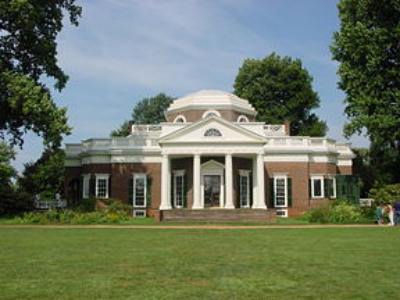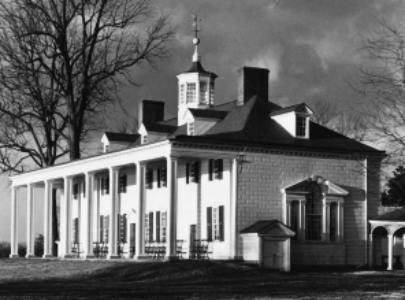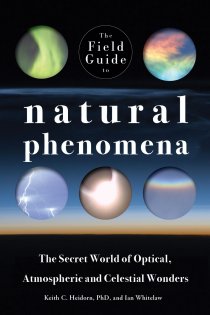 |
< |
 |
< |
| Home | Welcome | What's New | Site Map | Glossary | Weather Doctor Amazon Store | Book Store | Accolades | Email Us |
 | |||||||||||||
The Washington and Jefferson Snowstorm of 1772Two of America’s Founding Fathers Benjamin Franklin and Thomas Jefferson were well known for their interest in weather and climate. But they were not the only two who noted weather conditions — many, perhaps most did to some degree. Perhaps many will be surprised to learn that George Washington kept a distinct weather diary that he titled “An account of the weather” — separate from his other diaries. Washington began making entries in his weather diary in January 1767 and penned his final observation the day prior to his death in December 1799. Though lore suggests Jefferson began his weather diary on 4 July 1776 after buying a thermometer on his way to the signing of the Declaration of Independence, he in fact had been keeping weather records for some time, since at least 1772. He did, however, start a new diary Weather Memorandum on the first after having purchased the new thermometer — previous records had been entered in his Garden Book that related many aspects of weather and agricultural interest.
For the most part, Washington kept the diary, as did Jefferson and many plantation owners and farmers, for agricultural reasons. During those extended absences from his Mt Vernon plantation, Washington requested his overseer prepare a weekly summary of weather conditions. These were sent to Washington so that he could judge the weather’s effects on the Mt Vernon crops. We are fortunate that both men were at their plantations in January of 1772, for it was late in this month — the 26th through the 29th — that a major snowstorm hit Virginia. This storm likely dropped the greatest fall of snow in the middle and lower Potomac River valley and the area of the present District of Columbia since European settlement. If the observations of these two future American presidents are correct, the snow accumulation in the Washington DC area exceeded that of the infamous Knickerbocker Storm of 1922 and the equally infamous Snowmageddon storm of 2010 — though with the latter the statistics are very close. The storm, which we now know as the Washington and Jefferson Snowstorm may have dumped as much as 3 feet (0.91 m) of snow on the region. We are not able to reconstruct the history of the storm prior to its reaching the central Atlantic coast and burying central and northern Virginia, but we do know that heavy snowfall blanketed the region from Virginia and Maryland with lesser amounts northward to the states of Delaware, New York and Pennsylvania. We do know that the storm brought rain that began about 9 am on 26 January 1772 to the Moravian Brethren outpost at Bethabara, North Carolina (near the location of the present-day city of Winston-Salem). The rain changed to snow later in the day, and by the end of the following day (27 January), six inches (15 cm) had accumulated at Bethabara. Thereafter, skies cleared and freezing temperatures became established at the outpost. We have contemporary accounts of the January weather prior to the arrival of this storm. The Winchester Gazette carried an observation from a resident of Winchester, Virginia, at the northern head of the Shenandoah Valley. He noted, from the beginning of the winter until storm began on 27 January, it had been “the most pacific winter ever known since the memory of man.” A Jeffersonian ViewThomas Jefferson had only recently been married (1 January), and he and his bride were returning to Monticello (near the present city of Charlottesville, Virginia) as the storm began. The storm forced the newlyweds to abandon their carriage at Blenheim, about eight miles (12.8 km) from Monticello, and they continued concluded the journey on horseback, pushing over a mountain trail. According to accounts from Jefferson’s daughter years later, the couple “arrived late at night, the fires all out and the servants retired to their houses for the night. The horrible dreariness of such a house, at the end of such a journey, I have often heard both relate.”  Monticello: Thomas Jefferson's HomeJefferson wrote in his diary, the Garden Book, on the evening of the 26th: “the deepest snow we have ever seen, in Albemarle it was about 3. f [sic] deep.” Later in his life, he would note that this snowfall had not been exceeded in his subsequent observations. Washington’s Observations from Mt VernonGeorge Washington’s Mt Vernon home stands along the Potomac River, 16 miles (25 km) south of what is now Washington DC. He was in residence there in 1772 and made daily weather notes of the state of the weather as well as observations of temperature and wind direction.  Mount Vernon: George Washington's HomeAs the storm moved toward Mt Vernon, Washington noted these conditions in his “account of the weather” records: January 26 Raw, cold, and cloudy with the wind tho not much of it Northerly. The storm began overnight on January 27th and continued through the day. Washington described the event thus: “A snow which began in the night and was about 5 or 6 inches deep this morning kept constantly at it the whole day with the wind hard and cold from the northward” In his general diary, he painted the day as “dreadfully bad.” The storm continued: “January 28 The same snow continued all last night and all this day with equal violence the wind being very cold and hard from the Northward drifting snow into banks.” Washington complained that the weather had confined him to his house for two days. On the 29th, he observed: “Fine pleasant morning without any wind —but before 11 o'clock it clouded up & threatened snow all the remaining part of the day-being full three feet deep everywhere already” He did manage to leave home on the 29th and “with much difficulty rid [sic] as far as the Mill, the snow being up to the breast of a Tall Horse everywhere.” Washington would later relate in a letter dated 21 February that “…would be shut up for ten or twelve days, by the deepest snow which I suppose the oldest living ever remembers to have seen in this country.” Other ObservationsWashington and Jefferson were not the only ones to remark on the storm. The following accounts describe the conditions in Virginia and Maryland. The Winchester Gazette correspondent reported: “On the 27th and 28th of this month there fell a snow exceeding all ever known for the space of a hundred years. I measured it and it was 2 feet 9 inches deep.” The Maryland Gazette of Annapolis, Maryland printed the following on 30 January in reporting on the recent weather: “The winter has in general been very mild until Sunday evening last when it began to snow, which con¬tinued without intermission until Tuesday night. Yesterday morning we had again the appearance of fine moderate weather, but in the evening it began to snow very fast which continued all night; tis supposed the depth where not drifted is upwards of three feet, and it is with utmost difficulty people pass from one house to another.” (Annapolis is the nearest community to location of the future District of Columbia that then published a newspaper.) In Williamsburg, the Virginia colonial capital, the deep snow prevented many of the country burgesses from attending the General Assembly, which caused its meetings to be cancelled. Williamsburg’s Virginia Gazette out of decried the stoppage of postal service from the north, and five weeks would pass before postal service from the northern areas resumed. As with the Knickerbocker Storm, the storm did not have as great impact north of the Mason-Dixon Line. Weather records from Philadelphia show that snow began at around 10 am on the 27th and had ended by 9 am on the 28th. There was no other comment on the snowfall so it can be assumed that the accumulation was not considered noteworthy. Further north in New England, weather observations indicate that conditions on the 27th were windy (and from the north) and rather cold with some snowfall, but no significant accumulation. This would indicate that the low-pressure system responsible for the Virginia snows had moved out to sea — a similar situation to the Knickerbocker storm. The morning conditions on the 27th at Philadelphia, Pennsylvania were observed to be 18° F (-8°C) with brisk northeast winds and barometer at 30.50 inches Hg (1032 mb) just prior to the start of snowfall. Newport, Rhode Island reported some snow on the 27th with strong northern winds and temperatures below 20°F (-7°C). Further north at Salem, Massachusetts, the morning temperature on the 27th was a chilly 8°F (-12°C) with some light snow. Comparisons with the Knickerbocker Storm and Snowmageddon
The total accumulation for Snowmageddon of February 2010 at Washington’s Dulles International Airport was 32.4 inches (82.3 cm) and American University, 27.5 inches (70 cm). College Park, Maryland received 25 inches (64 cm) and the Baltimore—Washington Airport, 24.8 (63 cm). In Alexandria, Virginia, near Mt Vernon, 23.2 inches (59 cm) of snow fell. These totals do not quite reach the levels experienced in 1772 in the region of the District of Columbia. However, elsewhere in the Eastern states, the snow accumulation exceeded 36 inches (91 cm). Thought Snowmageddon ended with these totals, it was followed by a second major snowstorm, dubbed by many Snowmageddon 2.0, that pushed the snow on the ground totals significantly higher. Most of the material on the Washington-Jefferson snowstorm gleaned from Early American Winters Volume 1: 1602-1820, by David M. Ludlam, American Meteorological Society, 1966.Learn More From These Relevant Books
|
|||||||||||||
 |
Now AvailableThe Field Guide to Natural Phenomena: |
 |
To Purchase Notecard, |
Order Today from Amazon! | |
 |
 |
To Order in Canada: |
To Order in Canada: |


